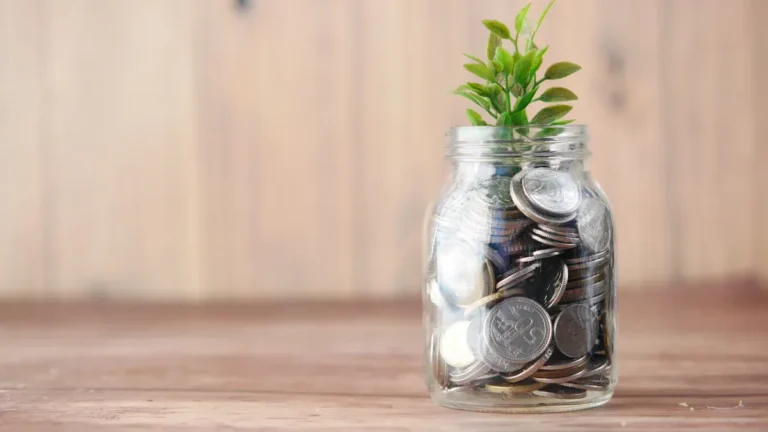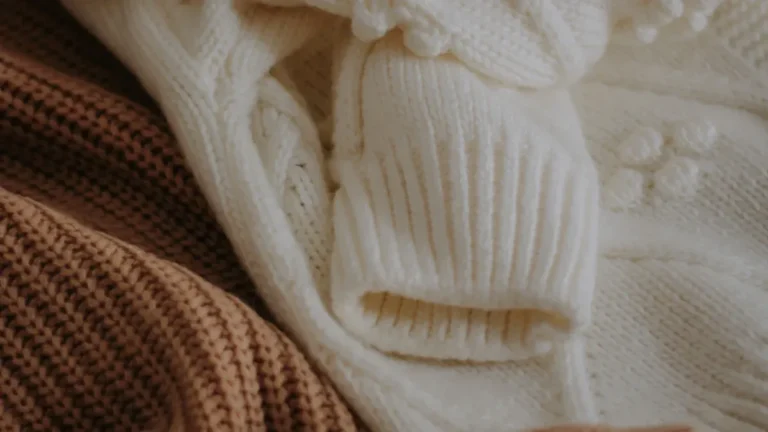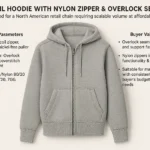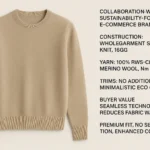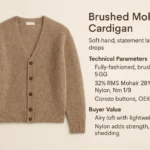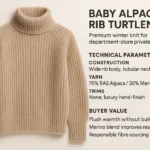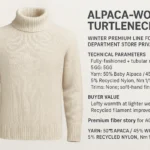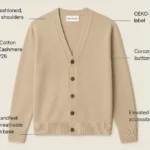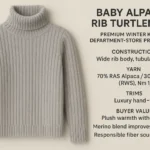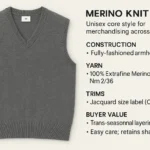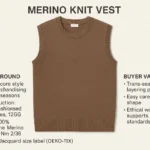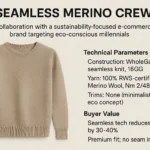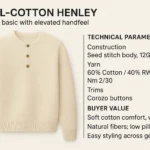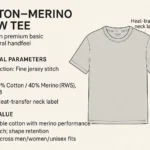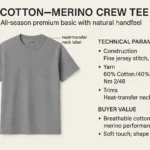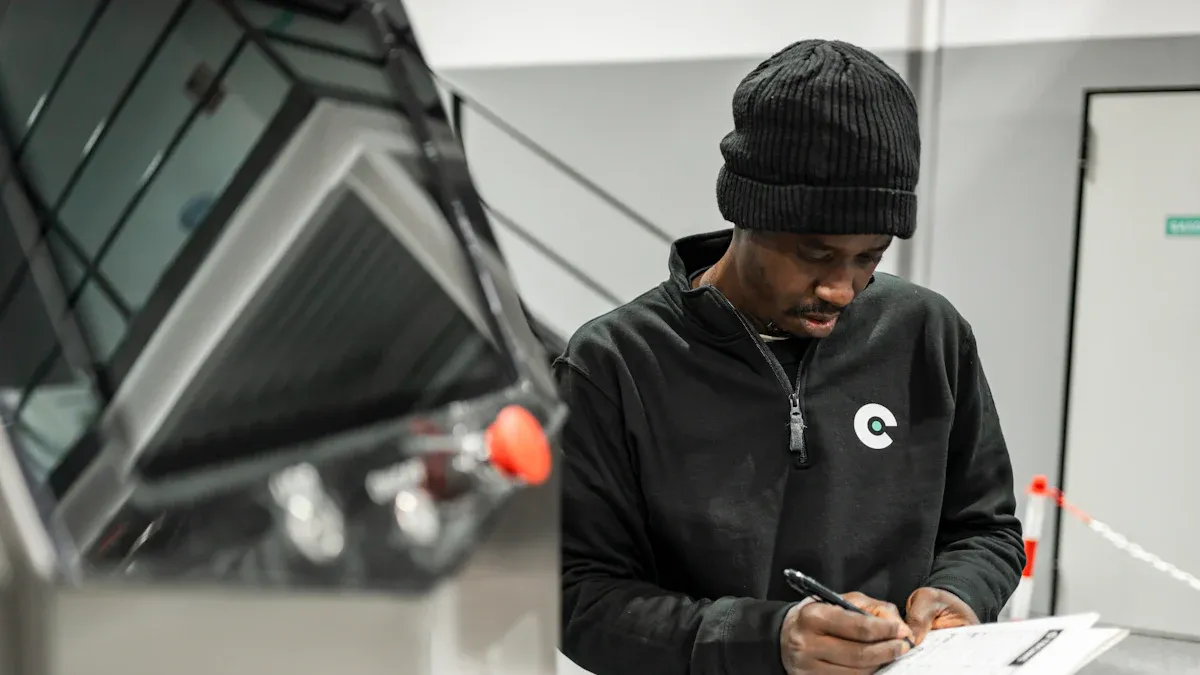
You can start designing custom beanies with just a few clicks. Online sites like Anthem Branding and Yes We Print help you choose styles. You can add embroidery or create custom patches. You can order one beanie or many, and if you buy more, you get a discount right away.
Quantity | Original Price | Discounted Price |
|---|---|---|
1 PC | $217.49 | $108.735 |
20 PCS | $21.41 | $10.695 |
50 PCS | $18.53 | $9.255 |
100 PCS | $16.46 | $8.22 |
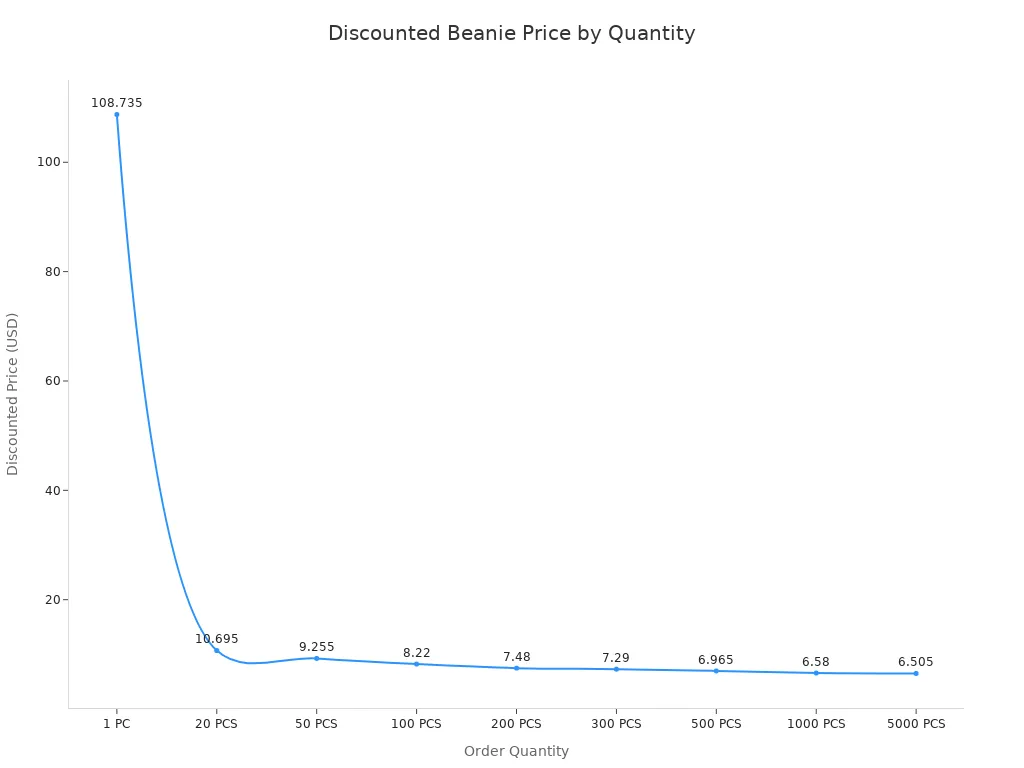
You can pick the materials, branding, and price. It is easy for anyone to start designing custom beanies. You can do it for yourself or your business.
Key Takeaways
Begin making custom beanies by picking your style and colors. Try online tools to see choices and make your own design.
Think about the material of your beanie. Wool, acrylic, and cotton all have different good points. They help with warmth, comfort, and how you care for them.
Show your brand with embroidery, patches, or printed logos. Each way has its own good sides. Pick the one that fits your design best.
Get samples before you buy a lot. This lets you check the design and quality. It makes sure your final product is what you want.
Use bulk discounts to save money. Buying more beanies at once lowers the price for each one. This helps you spend less.
Designing Custom Beanies
Key Steps Overview
Making custom beanies is fun and not hard if you follow steps. First, pick the style you like best. You can choose ribbed, jacquard, skully, midi, or cuffed beanies. Each one looks and feels different. Next, pick your yarn colors. Many websites have more than 25 colors. You can also ask for a special mix if you want something different.
You can add things like pom-poms, tags, embroidery, or labels. If you have a logo, you can upload it. If you need help, some companies have designers who can help you. After you finish your design, you get a picture to check. You can change things until you like it. When you say yes to the picture, they start making your beanies. This takes two to six weeks. Shipping usually takes a few days.
Here’s a quick look at the steps:
Step | Action |
|---|---|
1 | Choose Ribbed or Jacquard style (Skully, Midi, Cuffed) |
2 | Pick yarn colors (25+ available or custom blend) |
3 | Add custom elements: pom‑pom, tags, embroidery, labels |
4 | Submit your logo or work with a designer |
5 | Review and approve mockup |
6 | Production (2–6 weeks) and shipping (1–5 days) |
Tip: If you get stuck, you can ask the design team for help.
Online Design Tools
There are many online tools to help you make custom beanies. These websites make it easy to design, even if you are new. Some popular sites are VistaPrint, Printful, Custom Ink, RushOrderTees, Diehard Custom, and Anthem Branding.
Each website has something special:
RushOrderTees is fast and lets you buy just one beanie. You do not need to order a lot for printed designs.
Diehard Custom is good for small groups. You can order a few and get free help with your design.
VistaPrint is easy to use. You can add embroidered logos and order any amount.
Custom Ink lets you work with others on your design. You get a better price if you buy more.
Anthem Branding is great for fancy projects. You get high quality and lots of choices.
Printify is another tool you might like. You can pick a beanie from their list and use their Product Creator. You can upload your design, change the size, and add words or patterns. They even let you use AI pictures for something different.
Here’s a table to help you compare some top platforms:
Tool Name | Key Features | Best For |
|---|---|---|
RushOrderTees | Lightning-fast delivery, Trusted brand-name beanies, No minimums for printed designs | Startups needing quick branding |
Diehard Custom | Ultra-low MOQs, Custom design consultation included, Great for branded team merch | Small organizations and teams |
VistaPrint | Easy online ordering, Trusted retail-quality brands, Embroidered logos, no minimums | Startups looking for quick outfitting |
Custom Ink | Collaborative design platform, Great for distributed teams, Volume discounts for large orders | Startups wanting co-created merch |
Anthem Branding | High-end branding projects, Design-forward startups, Premium custom beanie production | VC-backed brands and major rebrands |
Most sites let you buy one beanie or many. Prices are usually $15 to $40 for each beanie. The price depends on your design and how many you buy. If you buy a lot, each beanie costs less. For example, Everlighten starts at $4.60 each if you buy 1,000. The Beanie Factory can go as low as $3.20 each for big orders.
Note: You do not have to buy a lot at first. Many sites let you order just one, so you can try your design before buying more.
Making custom beanies online lets you make something special. You can try different colors, styles, and logos until you find what you like best.
Materials

Common Types
When you start Designing Custom Beanies, you get to pick from several materials. Each one feels different and works best for certain needs. Here are the most popular choices:
Acrylic: This synthetic fiber keeps you warm and lasts a long time. It’s budget-friendly and easy to wash.
Wool Blends: These mix natural wool with other fibers. You get warmth and breathability, plus a softer feel.
Knitted Fabrics: These offer lots of texture options. They’re durable and can stretch to fit your head.
Cotton Fabric: Cotton feels soft and lets your skin breathe. It’s great for comfort and mild weather.
Yarns: Lightweight and cozy, yarn beanies work well for winter and layering.
Tip: If you want a beanie that feels soft and looks stylish, try wool or a wool blend.
Pros and Cons
Each material has its own strengths and weaknesses. Here’s what you need to know before you choose:
Wool Beanies: They trap heat and wick away moisture. Wool lasts a long time but needs gentle care. You might need to hand wash or use special detergent.
Acrylic Beanies: These work well for everyday use. Acrylic is tough and easy to clean, but it’s not as warm or breathable as wool.
Blended Materials: Blends combine the best parts of wool and acrylic. You get warmth, durability, and easier care.
Check out this table to compare cost, warmth, and care:
Material | Cost Level | Longevity | Warmth Level | Care Requirements |
|---|---|---|---|---|
Wool | High | High | High | Moderate |
Cashmere | Very High | High | Very High | High |
Acrylic | Low | Moderate | Moderate | Easy |
Polyester | Low | Moderate | Low | Easy |
Nylon | Moderate | High | Moderate | Easy |
Choosing for Purpose
You want your beanie to match your style and needs. Here’s how to pick the right material:
For outdoor sports, go with beanies that have thermal lining. These keep you warm even in cold wind.
For fashion, wool or cashmere gives you a classy look and soft feel.
If you need something for daily wear, acrylic or blends are easy to care for and last a long time.
Cotton works best for mild weather or indoor use.
Note: Think about where you’ll wear your beanie and how often you’ll wash it. The right material makes a big difference in comfort and durability.
Design & Branding Techniques

Embroidery vs Patches vs Printed Logos
When you start Designing Custom Beanies, you get to pick how your logo or artwork appears. The three main options are embroidery, patches, and printed logos. Each one has its own strengths and weaknesses. Here’s a quick table to help you compare:
Method | Advantages | Disadvantages |
|---|---|---|
Embroidery | Intricate details, works on many materials, strong branding | Size limits, higher cost for complex designs |
Patches | Flexible, easy to change, lots of design options | Can detach over time, less detail than embroidery |
Printed Patches | Detailed designs, even photos, good for big orders | Flat look, some design limits |
You might like embroidery for a classic, raised look. Patches give you more freedom to swap designs. Printed logos work well if you want lots of color or photo-like images.
Logo Size, Placement & Legibility
Logo size matters a lot. If your logo is too small, people might not notice it. Bigger logos stand out and make your brand look strong and trustworthy. Where you put the logo also changes how people see your beanie. The front and center spot is the most popular because everyone can see it. You can also try the side or back for a unique style. Make sure your logo is easy to read, even from far away.
Tip: Test different logo sizes and spots on a sample beanie to see what looks best.
Color Matching & Pantone Considerations
Getting your colors right is key for brand recognition. Many companies use Pantone colors to make sure every beanie matches their brand. When you use Pantone, you and the factory both know the exact shade you want. This keeps your beanies looking the same, even if you order more later. Try flipping through a Pantone color book or use a color wheel to pick colors that go well together. Think about the season, too—some colors feel more “winter” or “summer.” Sticking to your brand’s main colors helps people remember you.
Mockup & Prototyping Process
Before you order a lot of beanies, you should always check a mockup or sample. A mockup lets you see your design on a real beanie. You can spot problems with the fit, colors, or logo placement. If something looks off, you can fix it before the full order. This step helps you get the quality you want and saves money in the long run.
Always ask for a prototype. It’s the best way to make sure your custom beanie turns out just right.
Cost Strategies
Cost Factors
When you design custom beanies, several things can change the price. You want to know what makes one beanie cost more than another. Here’s a table to help you see the main factors:
Factor | Description |
|---|---|
Material Quality | The type and quality of materials you pick can raise or lower the cost. |
Design Complexity | Simple designs cost less. More details or colors mean more work and a higher price. |
Production Methods | Some ways to make beanies are faster or cheaper than others. |
Market Trends | Popular styles or colors can change prices, especially if demand is high. |
If you want a soft, warm beanie with a fancy logo, you might pay more. Simple, classic styles usually cost less.
Budget Tips
You can save money on custom beanies without losing quality. Try these smart strategies:
Strategy | Description |
|---|---|
Bulk supplier discounts | Order more at once to get a lower price per beanie. |
Smart inventory management | Only buy what you need to avoid waste and extra costs. |
Renting specialized equipment | Use special tools only when you need them to save money. |
Multi-functional tools | Pick tools that do more than one job to save space and cash. |
Negotiating bulk purchase deals | Talk to suppliers about better prices for bigger orders. |
Repurposing existing furniture | Use what you already have for your workspace to cut costs. |
Energy-efficient lighting | Lower your bills by using lights that save energy. |
Tip: Even if you only need a few beanies, some sites let you order small amounts. You can test your design before buying more.
Quality vs. Price
You want your beanies to look good and last long, but you also want a fair price. Here’s how you can balance both:
Small orders, like 12 beanies, can still be affordable.
Choose comfortable and durable materials so your beanies stay nice over time.
Many people pick embroidery for logos. It looks sharp and works well on thick knit beanies.
Bulk orders give you big discounts, so the more you buy, the less each one costs.
You don’t have to pick between quality and price. With smart choices, you can get both. Think about what matters most for your brand or group, and you’ll find the right balance.
Custom Beanie Design Process
Define Goals
You want your custom beanie project to stand out. Start by thinking about who will wear your beanies. Are you making them for athletes who need warmth? Maybe you want something cozy for everyday users. When you know your audience, you can pick the right materials and styles. Here’s a simple way to set your goals:
Decide who will wear your beanies. Will they be for sports teams, school clubs, or your business?
Learn what your audience likes. Do they want soft fabric, bold colors, or special features?
Use what you know about your ideal customer to guide your design. Pick styles and details that match their needs.
Tip: The better you understand your audience, the easier it is to create beanies they will love.
Manufacturer or DIY
You have a few ways to make custom beanies. Each method has good points and some drawbacks. Check out this table to see which option fits your project:
Method | Pros | Cons |
|---|---|---|
Custom Printing/Embroidery Service | Fast, convenient, low minimums | Limited customization, often imported, not built to last |
DIY with Local Supplier | Supports local shops, more personal oversight | Still uses imported blanks, limited customization |
Make Them Yourself | Unique, handmade, creative | Time-intensive, not scalable for businesses |
Fully Custom U.S. Manufacturer | 100% custom, U.S. made, built to your specs | Higher investment, but much better quality and impact |
If you want something quick and easy, try a printing service. If you want full control and high quality, work with a custom manufacturer. Making beanies yourself gives you a personal touch, but it takes a lot of time.
Samples & Quality
Before you order a lot of beanies, always ask for a sample. Samples let you check the design and feel the material. You can spot problems early and make changes. Quality checks during production help you catch issues like crooked embroidery or wrong colors.
Sample orders help you see if the design and material match your vision.
Quality checks make sure stitching and fabric stay consistent.
Watch out for common problems like misaligned logos or color mistakes.
Note: Taking time for samples and quality checks saves you money and keeps your brand looking sharp.
Working with Manufacturers & Suppliers
How to Vet Suppliers / Factories
Picking the right manufacturer is very important. You want someone who uses good materials and has many choices. They should also check quality carefully. Here’s a table to help you see what matters most:
Criteria | Description |
|---|---|
Material Selection | Look for choices like 100% wool, BIO-washed cotton, or heavy brushed cotton. |
Customization Options | Check if they offer silk screen printing, heat-transfer, or different embroidery styles. |
Quality Assurance | Ask about their inspection process for stitching, color, and logo accuracy. |
You can ask for samples or pictures of things they made before. This helps you know if their work is good enough for you.
Communication Tips & Sample Approval
Talking clearly with your supplier helps your project go well. Try these steps to make sure you both understand each other:
Make sure you talk openly about your design and what you want.
If you speak different languages, use a translator or a translation app.
Keep in touch often. Ask for updates and talk about problems fast.
Tip: Always ask for a sample before you order a lot. You can check the beanie and say yes to the design.
Lead Times, Shipping & Quality Control
You need to know how long your order will take. Most suppliers give you a timeline like this:
Supplier | Sample Time | Production Time | Shipping Time |
|---|---|---|---|
100% Custom Beanies | 4-6 days | 7-10 days | 3-4 days |
Some companies finish orders in two weeks. Others may take up to two months. Fast production is possible for private-label or wholesale orders.
Suppliers check quality very closely. They look at finished beanies and compare them to your sample. They cut off extra threads and pack each hat carefully. This keeps hats safe during shipping. Many factories do everything in one place, so they fix problems quickly.
Intellectual Property / Logo Rights
It is important to protect your logo and designs. Here are some things you should know:
Copyright protects your original artwork and lets you control how it is used.
Trademarks keep your brand name, logo, and slogans safe from copying.
Never use images or logos that are not yours. This can get you in trouble.
Here’s a quick checklist to keep your brand safe:
Make sure you own the rights to any image or words you use.
Get permission if you want to use someone else’s work.
Learn about fair use rules so you do not break the law.
Registering your trademark lets you stop others from using your brand. This keeps your custom beanies special and protects your business.
Case Studies / Inspiration
Real Custom Beanie Brands
You might wonder how real brands use custom beanies to stand out. Let’s look at some cool examples:
An outdoor apparel company made custom logo beanies. Their fans loved wearing them on hikes and camping trips. These beanies helped build strong brand loyalty.
A local café handed out custom beanies during winter. Customers wore them around town. The café’s logo got noticed everywhere, turning people into walking ads.
A tech startup wanted to attract younger crowds. They designed bold, quirky beanies for events. These eye-catching designs helped them stand out in a busy market.
Custom beanies show off your brand’s personality. You can go for a professional look or something fun and quirky. When you personalize your beanies, you show customers you care about quality and originality. This helps people remember your brand and keeps them coming back.
Custom beanies are more than just warm hats. They boost your brand’s image and create memorable experiences for your customers.
Lessons Learned & What Worked
You can learn a lot from brands that have made custom beanies before. Here are some important lessons:
Give clear instructions to your manufacturer. This helps you avoid bad samples.
Move quickly. Waiting for perfection can slow you down.
Focus on smart strategy, not just making lots of beanies.
Talk often with your factory. Good communication leads to better results.
Pick a few styles that sell well. Too many choices can hurt sales.
Use pre-orders to manage your cash flow.
Watch out for factories with very low prices. Cheap can mean poor quality.
Stick with a few reliable suppliers. This makes things easier.
Avoid last-minute changes. They can delay production and cost more.
Build a strong brand identity. Your logo matters, but your story and style matter even more.
If you keep these lessons in mind, you can create custom beanies that look great, sell well, and make your brand shine.
You now know the main steps to make custom beanies. Pick good materials and choose how you want your brand to look. Plan your costs and follow each step in the design process. Give yourself at least four weeks from when you say yes to the design until you get your beanies. This helps everything go smoothly.
Make sure your style, fabric, and design match what your audience likes.
Think about how long embroidery will last or how bright screen printing will look.
Be careful about minimum order amounts and setup fees.
Try free tools like Pacdora or use guides from Underground Printing to help you start. Use your creativity to make your brand special and easy to notice! 🎨🧢
FAQ
How long does it take to get custom beanies?
You usually get your custom beanies in 2 to 6 weeks. This time covers design, production, and shipping. Some companies offer rush options if you need them faster.
Can I order just one beanie?
Yes! Many online platforms let you order a single beanie. You can test your design before buying more. This is great if you want a sample or a unique gift.
What file type should I use for my logo?
Most sites accept PNG, JPEG, or vector files like AI and SVG. Vector files work best for embroidery. They keep your logo sharp and clear.
Will my beanie shrink after washing?
Acrylic and blends usually keep their shape. Wool may shrink if you use hot water or a dryer. Always check the care label and wash gently.
Can I use any color for my beanie design?
You can pick from many colors. Some companies match Pantone shades for perfect branding. Ask your supplier about color options before you order.




